The Three Pillars of Effective SEO: How They Work Together
On-Page SEO: Optimizing Your Digital Storefront
- Keyword-optimized content: Strategic placement of search terms in headings, paragraphs and metadata
- Meta tags & headers: Compelling title tags (under 60 characters) and properly structured H1-H3 headings
- Internal linking: Creating a web of relevant connections between your pages to boost visibility
Off-Page SEO: Building Your Online Reputation
- Backlink building: Earning links from authoritative sites in your industry
- Local citations: Consistent NAP (Name, Address, Phone) listings across directories
- Brand mentions: Getting talked about on relevant platforms without direct links
Technical SEO: The Foundation of Visibility
- Site speed: Ensuring pages load in under 2 seconds (critical for mobile users)
- Mobile optimization: Google now uses mobile-first indexing for all sites
- Indexability: Helping search engines properly crawl and understand your content
Pro Tip: While all three pillars matter, most small businesses see fastest results by focusing first on on-page and local SEO before tackling more advanced technical elements.
Small Business Keyword Strategy: Finding Your Golden Opportunities
The secret to effective keyword research lies in understanding your customers’ language while identifying gaps your competitors haven’t filled. Here’s how to approach it:
Local Keywords – Your Geographic Advantage
- “emergency plumber [city]” – Targets urgent, high-intent searches
- “[neighborhood] coffee shop” – Captures hyperlocal foot traffic
- “[city] [service] open now” – Perfect for mobile searchers
Long-Tail Phrases – Lower Competition, Higher Conversion
- “affordable wedding photographer near me with outdoor packages”
- “best organic hair salon for curly hair in [city]”
- “family dentist accepting new patients [neighborhood]”
Free Research Tools to Get Started
- Google Keyword Planner: Reveals search volume and competition
- AnswerThePublic: Uncovers real customer questions
- Google’s “People also ask”: Shows related queries for content ideas
- Local business forums: Discover how locals describe their needs
Example: A bakery might find that “gluten-free birthday cakes [city]” gets 150 monthly searches with medium competition – a perfect target opportunity.
On-Page Optimization Checklist: Turning Visitors into Customers
Your website’s pages are your 24/7 salespeople. Optimize them to both rank well and convert visitors:
Title Tags – Your First Impression
Content – Depth Wins Over Quantity
- Aim for 1,000+ words of comprehensive information
- Use semantic keywords naturally (e.g., “commercial” for “business”)
- Break text with subheadings every 300 words
- Include FAQs that match voice search queries
Images – Often Overlooked Opportunities
- Compress files to under 100KB without quality loss
- Use descriptive alt text (e.g., “interior-design-office-[city]”)
- Include location in image file names
Remember: Every page should have one clear focus. Create dedicated pages for each major service area and location you serve.
Local SEO Domination: Getting Found in Your Community
For small businesses, local SEO delivers the most immediate results. Here’s how to stand out in local searches:
Google My Business – Your Local Search Powerhouse
Complete every profile section including:
- Business categories: Choose specific, relevant categories
- Attributes: Highlight “women-owned” or “veteran-led” if applicable
- Services/products: List with detailed descriptions
- Photos: Add new high-quality images weekly
- Posts: Share offers, events and updates regularly
Example: A dental clinic could post about “Free Children’s Dental Screenings During [Local] School Break”
Citation Building – The Web of Local Trust
Ensure your NAP (Name, Address, Phone) consistency across:
- Core directories: Yelp, Yellow Pages, Bing Places
- Industry-specific: Houzz (for contractors), ZocDoc (for doctors)
- Local platforms: Chamber of Commerce, local newspapers
- Data aggregators: Infogroup, Acxiom, Localeze
Tip: Set up a Google Alert for your business name to catch new mentions.
Technical Must-Haves: The Behind-the-Scenes Essentials
While technical SEO sounds intimidating, these basics will cover 90% of needs for small businesses:
Mobile-Friendly – Non-Negotiable
- Test with Google’s Mobile-Friendly Test tool
- Ensure buttons are thumb-friendly (minimum 48px)
- Use responsive design that adapts to all screens
Fast Loading – Speed = Conversions
Secure – Basic Protection
- Install SSL certificate (HTTPS)
- Keep software/plugins updated
- Set up Google Search Console monitoring
Most website platforms like WordPress or Squarespace handle much of this automatically – just ensure you’re using a modern theme and keep everything updated.
📚 For more insights, check out our SEO services guide.
Tracking Success: What to Measure and Why
SEO is a long-term investment. These metrics help prove ROI and guide improvements:
Organic Traffic
- Google Analytics > Acquisition > Organic Search
- Look for upward trends, not daily fluctuations
- Segment by landing pages to see what’s working
Keyword Rankings
- Google Search Console > Performance
- Track 5-10 core keyword phrases monthly
- Celebrate top 3 position improvements
Business Impact
- Phone calls from website (use call tracking)
- Contact form submissions
- Online appointment bookings
Example: A roofing company might track rankings for “storm damage roof repair [city]” along with leads from their contact form.
Your Action Plan: Getting Started
- This week: Claim/optimize your Google My Business profile
- Next 30 days: Publish 2-3 optimized service pages
- Ongoing: Earn one new quality backlink per month
Remember: SEO success compounds over time. Implement these strategies consistently for 3-6 months to see significant results. The businesses that commit to continuous improvement will dominate their local markets.


